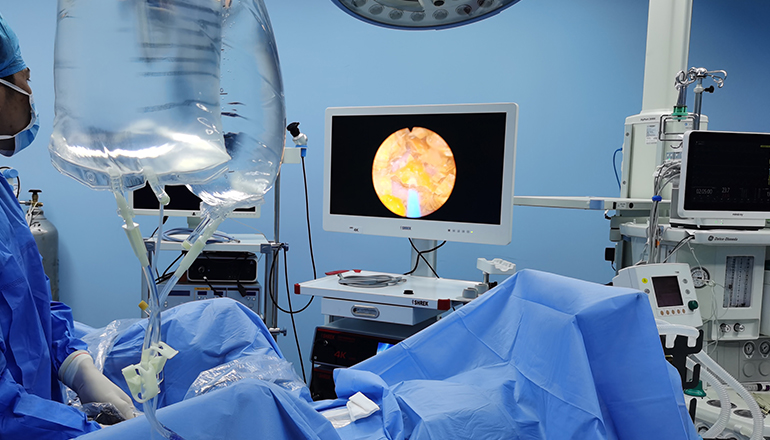- Shanghai, China
- [email protected]
- +86-21-58189111
Cystoscopy is a common surgical procedure used to diagnose and treat conditions of the bladder and urethra. During the procedure, a cystoscope - a thin, flexible tube with a light and camera at the end - is inserted through the urethra into the bladder, allowing the surgeon to visualize the inside of the bladder and urethra on a monitor.
There are several commonly used cystoscopy surgical instruments that are used during the procedure to aid in visualization and perform various tasks. Here are some of the most commonly used instruments:
Cystoscope: The cystoscope is the main instrument used during cystoscopy. It consists of a long, thin tube with a camera and light at the end, which allows the surgeon to visualize the inside of the bladder and urethra.
Resectoscope: A resectoscope is a specialized type of cystoscope that is used for surgical procedures such as transurethral resection of the prostate (TURP). It has a wire loop at the end that can be used to remove tissue from the prostate or other areas of the bladder.
Biopsy forceps: Biopsy forceps are small instruments that are used to take tissue samples (biopsies) from the inside of the bladder. They are inserted through the cystoscope and used to grab a small piece of tissue, which is then removed and sent to a lab for analysis.

Graspers: Graspers are long, thin instruments that are used to hold and manipulate tissues inside the bladder. They can be used to move tissue out of the way during a procedure, or to grasp and remove foreign objects.
Irrigation catheter: An irrigation catheter is a small tube that is used to flush fluid into the bladder during a procedure. This can help to clear the bladder of blood or debris, or to dilate the bladder for better visualization.
Stents: Stents are small tubes that are inserted into the ureter to help drain urine from the kidney to the bladder. They can be used to treat blockages or strictures in the ureter.
Laser fibers: Laser fibers are thin, flexible tubes that are used to deliver laser energy to the inside of the bladder. This can be used to treat conditions such as bladder cancer or to remove stones from the bladder.
Stone basket: A stone basket is a specialized instrument that is used to remove bladder stones. It consists of a long, thin tube with a basket-like structure at the end that can be used to grab and remove stones from the bladder.
Electrocautery: Electrocautery is a tool that uses electricity to heat tissue and coagulate blood vessels. It can be used during cystoscopy procedures to control bleeding or to remove tissue.
Suction irrigator: A suction irrigator is a device that is used to flush fluid into the bladder and simultaneously suction it out. It can be used to remove debris or blood from the bladder during a procedure.
In addition to these instruments, there are also various accessories and consumables used during cystoscopy procedures, such as cystoscopy sheaths, biopsy needles, and catheters.
It's important to note that cystoscopy procedures are typically performed under anesthesia, and the specific instruments and techniques used can vary depending on the type of procedure being performed and the condition being treated. In some cases, minimally invasive techniques may be used to avoid the need for open surgery.
In conclusion, cystoscopy is a common procedure used to diagnose and treat conditions of the bladder and urethra. A variety of instruments and accessories are used during cystoscopy procedures to aid in visualization and perform specific tasks. If you are scheduled for a cystoscopy procedure, your healthcare provider will discuss the specific instruments and techniques that will be used, and what to expect during and after the procedure.
Leave a Comments